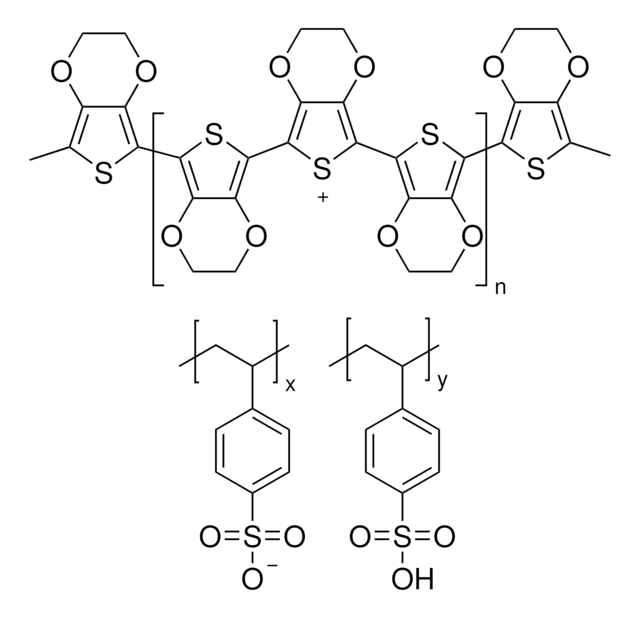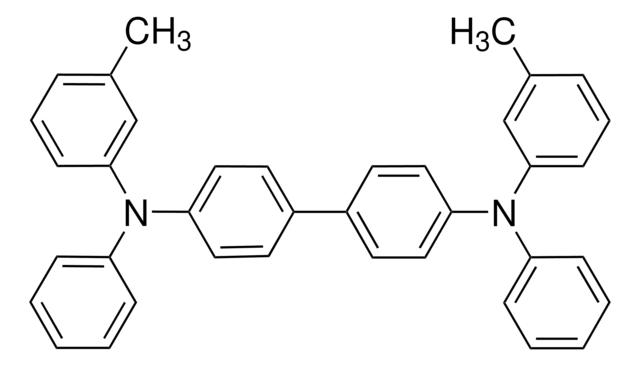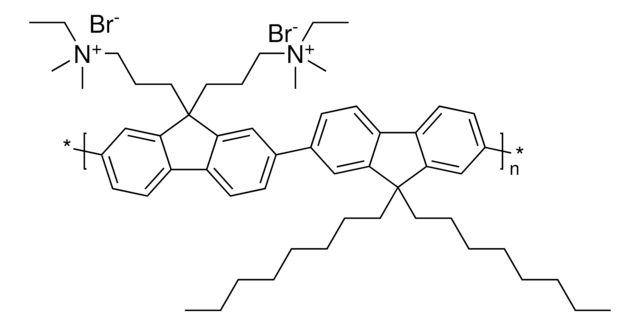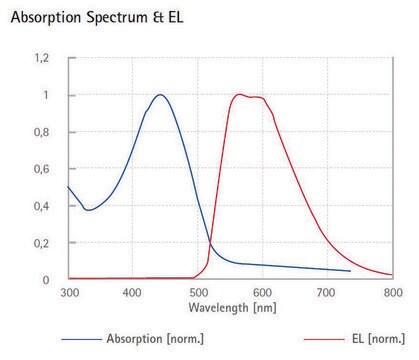901101
TFB
Sinonimo/i:
Poly[(9,9-dioctylfluorenyl-2,7-diyl)-co-(4,4′-(N-(4-sec-butylphenyl)diphenylamine)]
About This Item
Prodotti consigliati
Stato
powder
Livello qualitativo
PM
average Mw >30,000 by GPC
Caratteristiche più verdi
Design for Energy Efficiency
Learn more about the Principles of Green Chemistry.
sustainability
Greener Alternative Product
Colore
yellow
Punto di fusione
>300 °C
Categoria alternativa più verde
, Enabling
Stringa SMILE
CCCCCCCCC1(CCCCCCCC)C2=C(C=CC(C3=CC=C(N(C4=CC=C(C(CC)C)C=C4)C5=CC=C(C)C=C5)C=C3)=C2)C6=C1C=C(C)C=C6
InChI
1S/C53H67N/c1-7-10-12-14-16-18-36-53(37-19-17-15-13-11-8-2)51-38-41(5)22-34-49(51)50-35-27-45(39-52(50)53)44-25-32-48(33-26-44)54(46-28-20-40(4)21-29-46)47-30-23-43(24-31-47)42(6)9-3/h20-35,38-39,42H,7-19,36-37H2,1-6H3
LMXSDGRJIJNLIY-UHFFFAOYSA-N
Cerchi prodotti simili? Visita Guida al confronto tra prodotti
Descrizione generale
Applicazioni
Codice della classe di stoccaggio
11 - Combustible Solids
Classe di pericolosità dell'acqua (WGK)
WGK 3
Punto d’infiammabilità (°F)
Not applicable
Punto d’infiammabilità (°C)
Not applicable
Scegli una delle versioni più recenti:
Certificati d'analisi (COA)
Non trovi la versione di tuo interesse?
Se hai bisogno di una versione specifica, puoi cercare il certificato tramite il numero di lotto.
Possiedi già questo prodotto?
I documenti relativi ai prodotti acquistati recentemente sono disponibili nell’Archivio dei documenti.
I clienti hanno visto anche
Articoli
Advances in the area of soft optoelectronics, with a focus on the development of organic optoelectronic devices on shape memory polymers (SMP) is discussed.
Il team dei nostri ricercatori vanta grande esperienza in tutte le aree della ricerca quali Life Science, scienza dei materiali, sintesi chimica, cromatografia, discipline analitiche, ecc..
Contatta l'Assistenza Tecnica.
![Poly[(9,9-di-n-octylfluorenyl-2,7-diyl)-alt-(benzo[2,1,3]thiadiazol-4,8-diyl)] average Mn ≤25000](/deepweb/assets/sigmaaldrich/product/structures/428/661/1c4ebb98-9d51-48c0-96c7-e556ca425aa4/640/1c4ebb98-9d51-48c0-96c7-e556ca425aa4.png)






![Poly[(9,9-dioctylfluorenyl-2,7-diyl)-co-bithiophene] 99.9%](/deepweb/assets/sigmaaldrich/product/structures/309/000/8b4a3f54-7765-4aca-96c4-74ce328d455d/640/8b4a3f54-7765-4aca-96c4-74ce328d455d.png)

